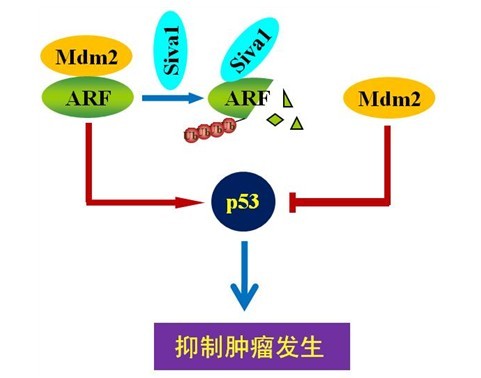New mechanism underlying regulation of tumor suppressor ARF was found
Recently, research group led by Prof. Mian Wu and Prof. Yide Mei from Hefei National Laboratory for Physical Sciences at Microscale and School of Life Sciences, USTC has found a new mechanism underlying the regulation of Siva1 on ARF, which is an important tumor suppressor. The result has been published online on Nature Communications, March 5 issue, 2013.
ARF is considered as one of the most important tumor suppressors that have ever found. In over 50% of the human tumor cells, ARF is found to be either mutated or deleted. ARF plays critical roles in various physiological and cellular processes including cell proliferation, cell senescence and cell cycle arrest. However, little is known about how ARF itself is regulated at molecular level.
Prof. Mian Wu had previously pointed out that Siva1 plays important inhibitory roles in epithelial-mesenchymal transitions (EMT) and tumor metastasis (PNAS, 2011 108: 12851-12856). Recently, Wu and Mei had found that Siva1 is able to interact with ARF directly, and moreover, they found that Siva1 possesses an E3 ubiquitin ligase activity, by which Siva1 is able to degrade ARF by the ubiquitin-proteasome system. More importantly, Siva1 negatively regulates p53 through modulating ARF level, thus to promoting tumor development. These findings not only provide better understanding of how ARF-Mdm2-P53 signaling contributing to tumorgenesis, but also offer a potential new drug target for treating tumors.
The co-first authors are Wang Xinwu, Zha Meng and Zhao Xiaocheng from Wu’s lab and this work is financially supported by National Natural Science Foundation of China, Chinese Academic of Sciences and Ministry of Science and Technology of China.

Schematic diagram of Siva1 in promoting tumorgenesis via degradation of ARF
Back
